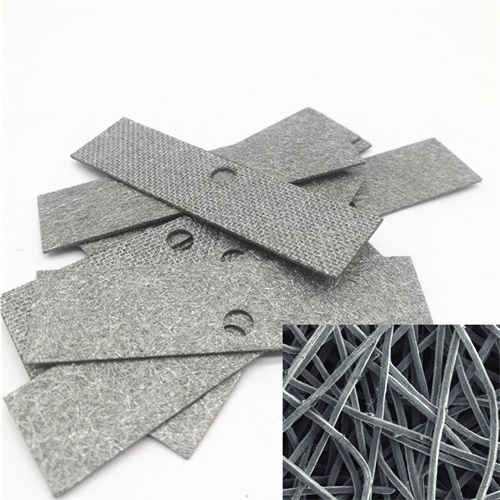The overall structure of Titanium Fiber Felt for PEM has the following characteristics:
Three-dimensional mesh structure: Titanium Fiber Felt for PEM is typically composed of micron-sized titanium fibres that are interlaced through a specific process to form a three-dimensional mesh structure. This structure provides a large specific surface area, which aids in gas diffusion and reaction.
High porosity: The porosity of Titanium Fiber Felt for PEM is generally between 60% and 75%, which means that it has a large number of pores to facilitate the flow of gases and liquids and improve the efficiency of gas-liquid mass transfer.
Uniform pore size distribution: The pore size of Titanium Fiber Felt for PEM is usually uniformly distributed, which helps to avoid the aggregation of gas bubbles and ensures that the electrolysis reaction proceeds smoothly.

Excellent Mechanical Strength: The material properties of Titanium Fiber Felt for PEM allow it to maintain good strength and stability under high pressure and high temperature environments, making it suitable for use in electrolysis tanks.
Corrosion resistance: Titanium’s excellent corrosion resistance makes Titanium Fiber Felt for PEM perform well in acidic or alkaline environments and can be used for a long time without degradation.
Low Density: Titanium Fiber Felt for PEM is relatively lightweight, which allows for the design of electrolysers in a way that reduces the overall weight of the equipment, making it easier to install and maintain.
These structural features make Titanium Fiber Felt for PEM effective in water electrolysis for hydrogen production, improving electrolysis efficiency and system stability.